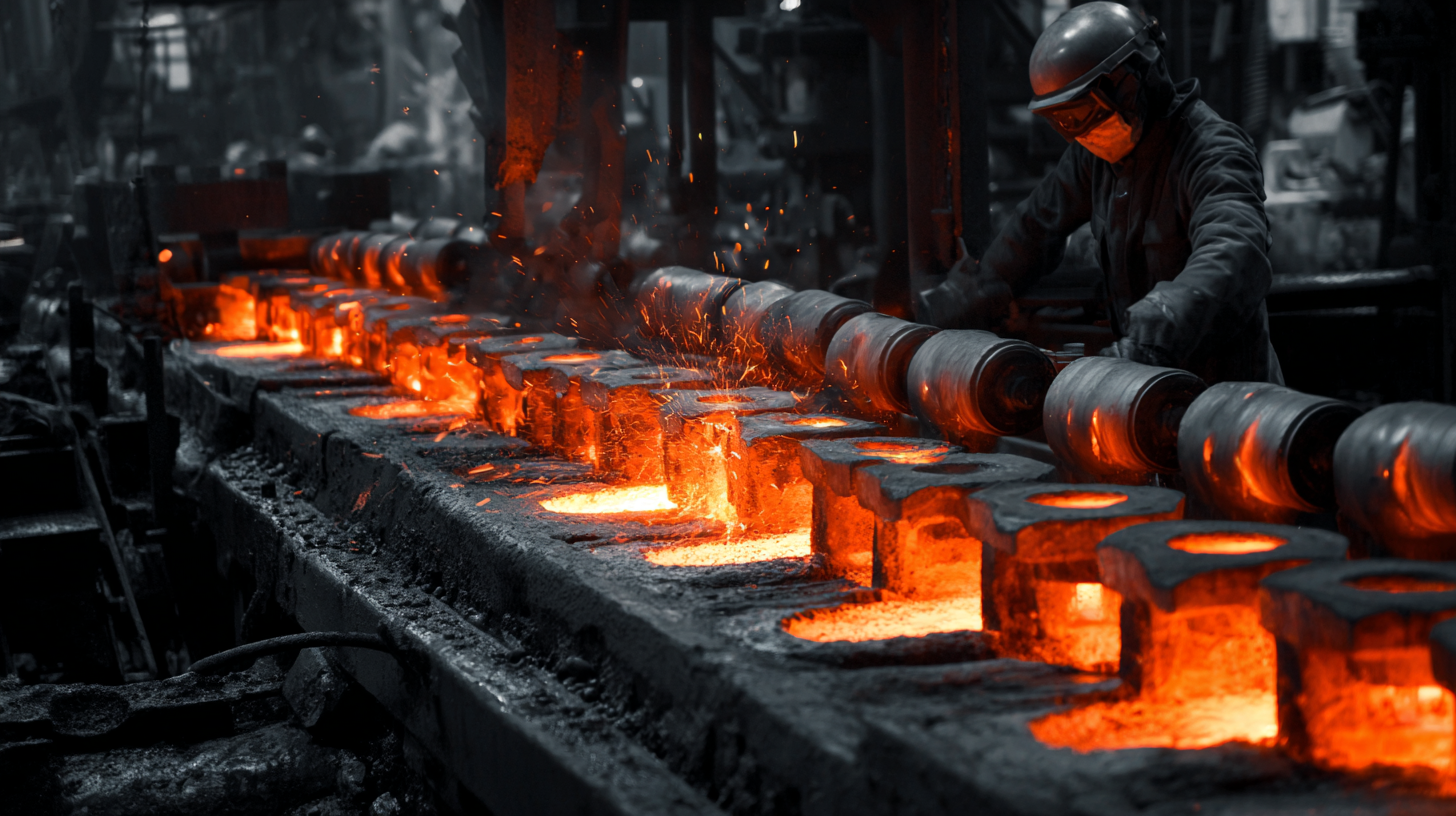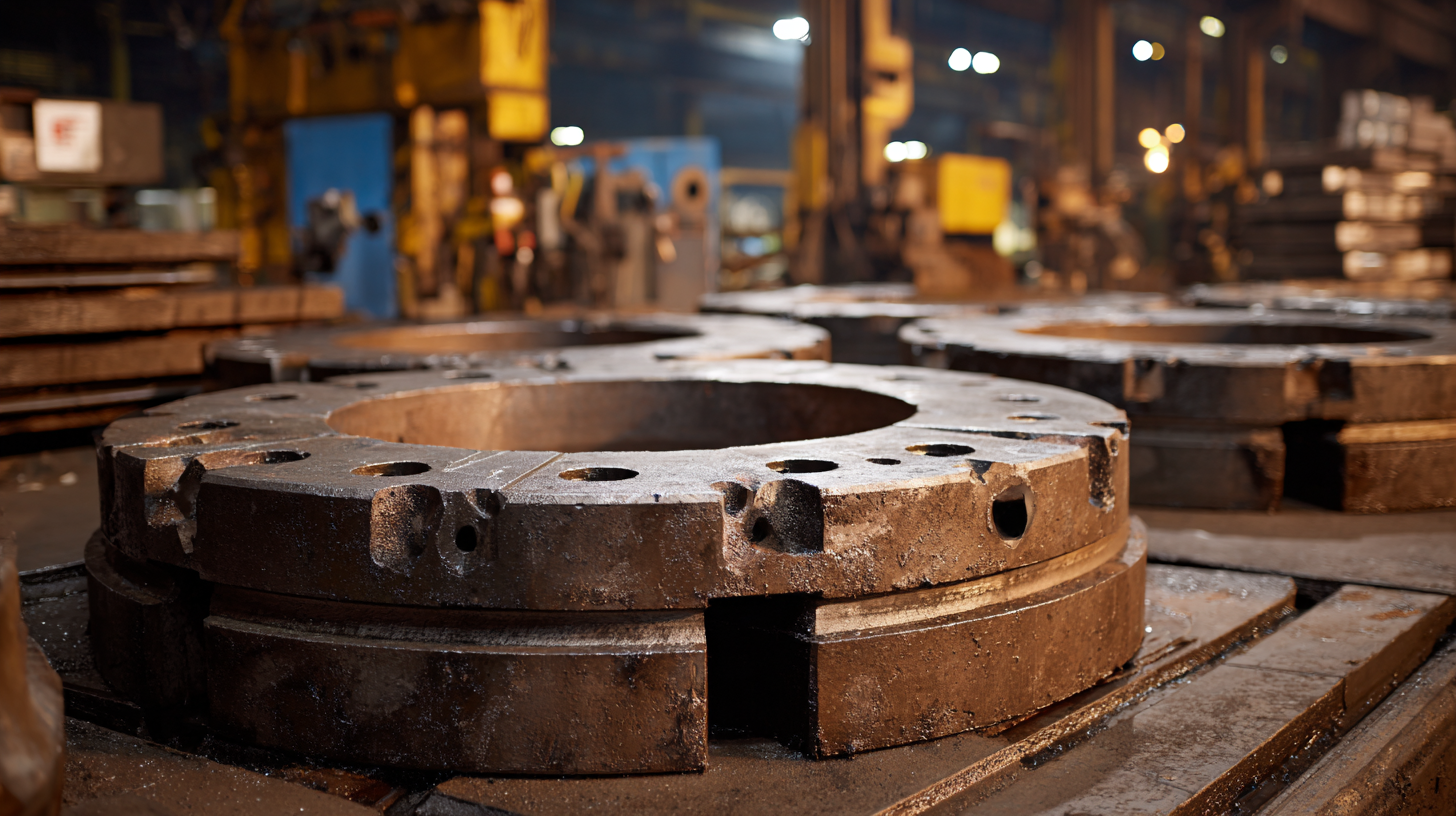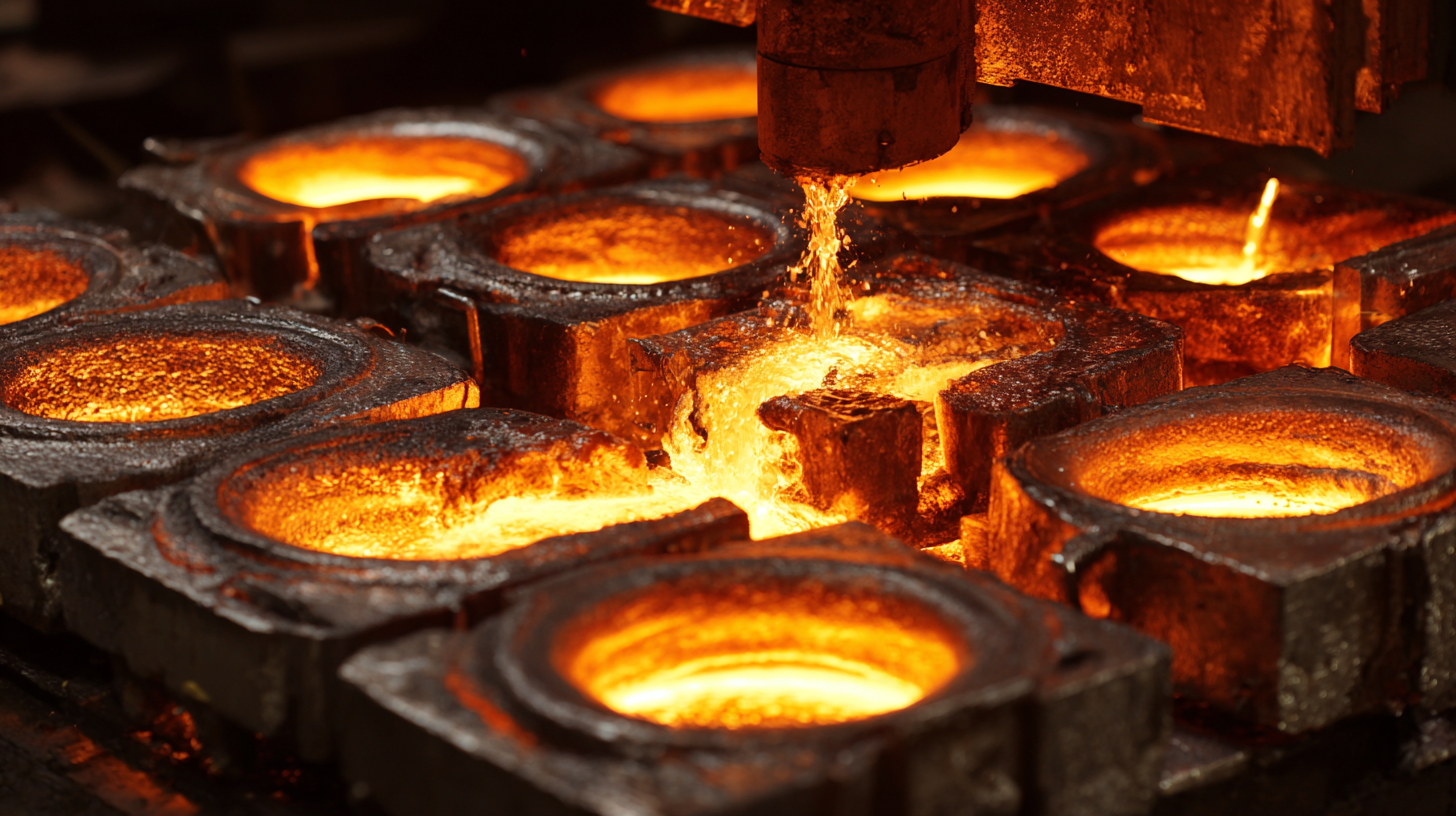 +86 180 0293 5268
+86 180 0293 5268






As global industries increasingly pivot towards sustainable manufacturing solutions, the role of Steel Casting Parts has never been more critical. According to a recent report from the World Steel Association, the steel industry contributes to around 7% of global carbon dioxide emissions, highlighting the urgent need for greener practices. The Chinese manufacturing sector, recognized for its prowess in producing high-quality steel casting components, is making significant strides in this area. With an export footprint that spans across continents, China's emphasis on innovation and sustainability positions it as a leader in the development of eco-friendly casting technologies. This blog will explore the future of Steel Casting Parts, focusing on the sustainable practices that are transforming the landscape of manufacturing and setting benchmarks for industries worldwide.

 Steel casting plays a pivotal role in sustainable manufacturing practices, providing a blend of durability and efficiency crucial for reducing waste and resource consumption. According to a report by the American Foundry Society, the steel casting industry has made significant strides in decreasing energy consumption by approximately 15% over the past decade. This reduction not only minimizes the carbon footprint but also enhances the overall sustainability of manufacturing processes.
Steel casting plays a pivotal role in sustainable manufacturing practices, providing a blend of durability and efficiency crucial for reducing waste and resource consumption. According to a report by the American Foundry Society, the steel casting industry has made significant strides in decreasing energy consumption by approximately 15% over the past decade. This reduction not only minimizes the carbon footprint but also enhances the overall sustainability of manufacturing processes.
Tip: When choosing steel casting suppliers, look for those with certifications in sustainable practices or those who actively participate in initiatives aimed at improving energy efficiency in their operations. This ensures your project aligns with environmentally responsible standards.
Furthermore, the adaptability of steel casting materials allows for longer product lifespans, which contributes to a circular economy. As the World Steel Association highlights, steel is one of the most recycled materials globally, with recycling rates exceeding 80%. Utilizing recycled steel in casting processes reduces the need for virgin materials, thus conserving natural resources and lowering greenhouse gas emissions.
Tip: Prioritize the use of recycled materials in your steel casting projects, as this choice not only promotes sustainability but can also lead to cost savings and improved marketability in an increasingly eco-conscious consumer landscape.
The future of best steel casting parts in sustainable manufacturing solutions is heavily influenced by the key technical parameters that define high-performance components. According to recent industry reports, such as those by the National Institute of Standards and Technology (NIST), advancements in material composition and processing techniques have enabled manufacturers to enhance the mechanical properties of steel castings significantly. Parameters like tensile strength, ductility, and fatigue resistance are critical, with modern alloys achieving tensile strengths exceeding 700 MPa while maintaining impressive ductility levels.
Moreover, the focus on sustainability in manufacturing is driving innovations in casting technologies. For instance, targeted investments in energy-efficient melting processes can reduce carbon emissions by up to 30%, as per findings from the American Foundry Society. The integration of digital technologies, like simulation and real-time monitoring, allows for optimal design and reduced waste, ensuring that the steel casting parts meet rigorous performance standards while adhering to eco-friendly practices. By prioritizing these technical parameters, the steel casting industry not only enhances product reliability but also aligns with the growing demand for sustainable solutions in manufacturing.
| Parameter | Description | Typical Value | Importance |
|---|---|---|---|
| Material Composition | The types and percentages of elements in the steel alloy. | Carbon 0.3%-0.6%, Manganese 0.7%-1.0% | Critical for strength and durability. |
| Casting Process | The technique used to create the cast parts. | Sand Casting, Investment Casting | Affects surface finish and dimensional accuracy. |
| Tensile Strength | The resistance of the material to being pulled apart. | 400-600 MPa | Essential for load-bearing applications. |
| Hardness | The ability of the material to withstand scratching and indentation. | Brinell Hardness: 180-250 HB | Determines wear resistance. |
| Yield Strength | The stress at which material begins to deform plastically. | 300-500 MPa | Indicates safety limits under load. |
As the manufacturing industry increasingly focuses on sustainability, the techniques employed in steel casting are evolving to enhance environmental responsibility. Innovative technologies like 3D printing and digital simulations are paving the way for more efficient production processes that minimize waste. For instance, the use of additive manufacturing enables the creation of complex geometries that require less material and energy than traditional methods. This shift not only reduces resource consumption but also lowers the overall carbon footprint associated with steel casting.
Another significant advancement is the integration of recycled materials in the casting process. By using scrap steel and other reclaimed resources, manufacturers can drastically decrease their reliance on virgin materials, making steel casting more sustainable. Furthermore, advancements in alloy development allow for the creation of high-performance materials that meet stringent industry standards while being produced with a lower environmental impact. These innovative techniques not only contribute to a greener manufacturing landscape but also offer economic advantages by lowering production costs and enhancing product durability.
The steel casting industry is undergoing a significant transformation as manufacturers increasingly prioritize sustainable practices. An essential aspect of this shift is the reduction of the carbon footprint associated with steel casting processes. Recent industry data indicates that by adopting advanced technologies such as electric arc furnaces and innovative recycling methods, companies can significantly lower greenhouse gas emissions. These technologies not only enhance the efficiency of production but also contribute to a more circular economy by reducing waste and promoting the reuse of materials.
Furthermore, data analytics plays a crucial role in identifying areas for improvement in energy consumption and material usage. By analyzing operational metrics, manufacturers can implement targeted strategies to minimize their environmental impact. For instance, predictive maintenance powered by AI can optimize machinery performance, thereby reducing downtime and energy waste.
As the steel casting sector moves forward, the integration of sustainable manufacturing solutions will not only address environmental concerns but also meet the growing demand for eco-friendly products in various industries, positioning steel casting as a leader in responsible manufacturing practices.
The future of steel casting materials is being reshaped by an increasing focus on sustainable manufacturing solutions. According to a report by the Global Steel Innovations Forum, the adoption of eco-friendly materials and processes in steel casting could reduce carbon emissions by up to 20% by 2030. This shift is critical as industries strive for greener practices in response to global climate goals.

One emerging trend is the use of recycled steel in casting processes. The Steel Recycling Institute indicates that recycling steel saves 1.5 tons of iron ore, 0.5 tons of coal, and 0.3 tons of limestone for every ton of steel produced. Moreover, advancements in additive manufacturing are facilitating the creation of complex steel parts with less waste and energy consumption. Industry reports suggest that integrating 3D printing with traditional steel casting methods can reduce material waste by up to 50%, thereby supporting both efficiency and environmental sustainability.
As manufacturers increasingly prioritize eco-friendly solutions, innovations in steel casting will play a vital role in meeting both performance standards and environmental responsibilities. The push towards reducing carbon footprints and enhancing the recyclability of materials is steering the sector toward a more sustainable future.
